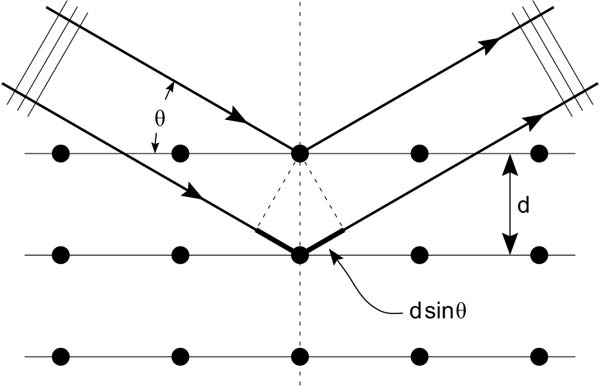Bragg's law

Bragg diffraction: Two beams with identical wavelength and phase approach a crystalline solid and are scattered off two different atoms within it. The lower beam traverses an extra length of 2dsinθ. Constructive interference occurs when this length is equal to an integer multiple of the wavelength of the radiation.
Bragg's law is the fundamental relationship in X-ray crystallography. It can be written as:
nλ = 2d sinθ
where n is an integer, λ is the wavelength of a beam of X-rays incident on a crystal with lattice planes separated by a distance d, and θ is the Bragg angle. Bragg's law is named after the physicist William Lawrence Bragg (1890–1971).
Bragg angle
The Bragg angle is the angle between an incident beam of X-rays and a set of crystal planes for which the reflected or transmitted radiation displays a maximum intensity as a result of constructive interference.


